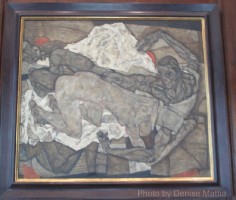
By Denise Mattia
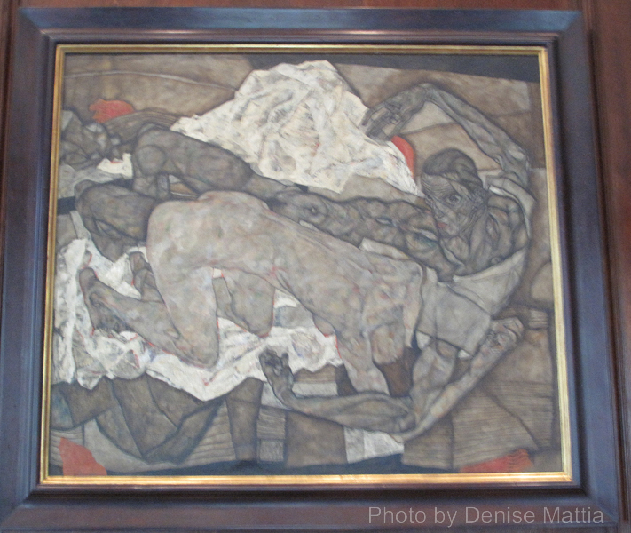 A visit to Vienna’s Leopold Museum is like going back in time to the turn of the twentieth century, a period that was characterized by years of creative tension for those who lived not only in Vienna but in all of Europe and in America as well. It was a time and a place of incredible richness, of sensuality, and emotional directness.
A visit to Vienna’s Leopold Museum is like going back in time to the turn of the twentieth century, a period that was characterized by years of creative tension for those who lived not only in Vienna but in all of Europe and in America as well. It was a time and a place of incredible richness, of sensuality, and emotional directness.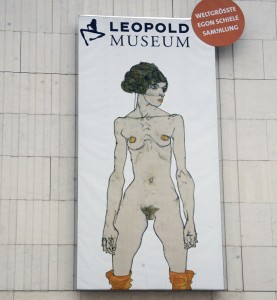
Fine and performing artists and writers were influenced by a combination of technological advances and philosophical thought that brought new dimensions to their work. 1903 saw the Wright brothers at Kitty Hawk rising free from the earth to sustain flight in space and foreshadow new spheres of communication. In 1905 Einstein formulated his concept of the nature of time and space and revealed Man’s relation to the Universe. In 1908 Freud gathered a group of colleagues and launched the First International Congress in Psychoanalysis. Nietzche developed the “psychology of exposure,” the assumption that the unconscious stands behind human consciousness as the real motive of human attitudes or actions. Strindberg wrote “dream plays” concerning the replacement of the external by internal movement, and art historian Wilhelm Worringer developed theories on the importance of the artist’s intent. Artists chose to distort Nature as an expression of the innermost self. To Conrad Fiedler, a work of art was the result of the artist’s unique visual perception – his “inner necessity.”
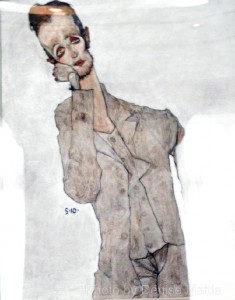
Egon Schiele, Self Portrait
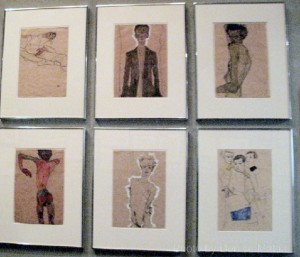
Gustav Klimpt, Drawings
In Vienna the relationship among the areas of art, psychology and medicine had a powerful impact on artists. Among other works, the Leopold Museum and Museum of Modern Art features the paintings of Egon Schiele, whose erotic works and self-portraits suggest tortured psychological states, while Oskar Kokoschka’s portraits are investigations of the inner psyche. Gustav Klimt broke social taboos with his drawings of female sexuality, which caused a scandal when they were first exhibited and published in 1907 in his illustration to The Dialogues of the Hetaerae.
Vienna wasn’t the only city where scandal occurred. At the Paris Salon d’Automne of 1905 – 1906, Les Fauves (Wild Beasts), led by Matisse, declared their independence of Nature and the traditional Western ways of representation. In 1908 Diaghilev brought the Ballets Russes to Parisian theatres. The young choreographers and dancers of the company broke away from the traditional 19th century choreography to perform new works, which were shocking and controversial, both for the music (Stravinsky’s Rite of Spring) and wildness of the dances. Within the same span of time, American born Isadora Duncan moved to Europe and rejected traditional ballet steps to stress improvisation, emotion and the human form. Releasing dance from traditional ballet, the choreographer and teacher is considered today the creator of modern dance.
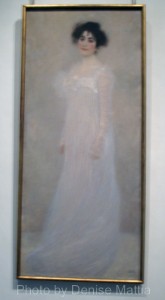
Oskar Kokoschka
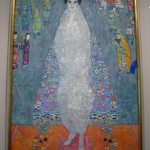 Some of the leading creative and intellectual personalities of the day were involved in advancing women’s position and advocating reform. Tightly laced corsets and elaborate accessories gave way to designers such as those at the Wiener Werkstätte (Vienna Workshop) who created stylish and comfortable dresses that allowed women new freedom of movement. The community of visual artists that comprised the workshop brought together artists, fashion and interior designers and architects, whose purpose was “to make all facets of human life into one unified work of art,” a Gesamtkunstwerk.
Some of the leading creative and intellectual personalities of the day were involved in advancing women’s position and advocating reform. Tightly laced corsets and elaborate accessories gave way to designers such as those at the Wiener Werkstätte (Vienna Workshop) who created stylish and comfortable dresses that allowed women new freedom of movement. The community of visual artists that comprised the workshop brought together artists, fashion and interior designers and architects, whose purpose was “to make all facets of human life into one unified work of art,” a Gesamtkunstwerk.
In architecture, Otto Wagner discarded the formulaic application of historical forms, placing emphasis on the function of an object, and in America, architect Louis H. Sullivan advocated the idea that the shape of a building or object should be based upon its function or purpose. (Sullivan is credited for coining the phrase, “form follows function”.)
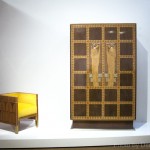 Artists who objected to the prevailing conservatism and who advocated a form of modernism for all areas of daily life formed the colorful world of the Secessionists (the Austrian version of Art Nouveau. Domestic products and household furniture designed by Wagner and architect and designer Josef Hoffmann created a style that was essentially functional structures.
Artists who objected to the prevailing conservatism and who advocated a form of modernism for all areas of daily life formed the colorful world of the Secessionists (the Austrian version of Art Nouveau. Domestic products and household furniture designed by Wagner and architect and designer Josef Hoffmann created a style that was essentially functional structures.
The other side features the aesthetic world of Oskar Kokoschka and Adolf Loos who considered architectural ornament “criminal.” Loos’ approach to the decorative arts was conservative, repudiating the florid style of the Vienna Secession and advocating high quality and excellent craftsmanship.
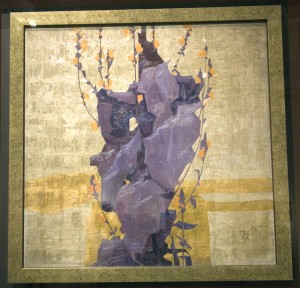
Egon Schiele, Stylized Flowers in Front of Decorative Background
In these complex dawning years of the twentieth century, musicians in Vienna responded to the challenge of the new possibilities as well. Austrian born composers Gustav Mahler, Anton von Weebern, Alban Berg and Arnold Schoenberg (Theory of Harmony) carried the logic of the modern consciousness to its extreme limits.
The Leopold Museum and the Museum of Modern Art in Vienna give viewers a glimpse of the 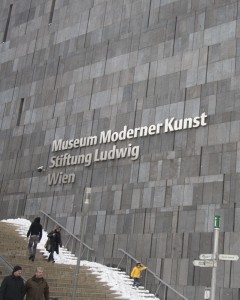 period – the common thread that united Europe and America at the turn of the 20th century.
period – the common thread that united Europe and America at the turn of the 20th century.
About Denise Mattia
A writer and photographer, Denise Mattia’s works are published nationally and internationally and include all aspects of leisure travel: art , culture, resorts, spas, food and wine and sports’ activities. She's the founder of the soon to be launched Yum-Yum-Traveler, a site devoted to reviewing restaurants in addition to her travel articles from around the world. She lives and works in Manhattan, where she was born.
- Web |
- More Posts (91)
